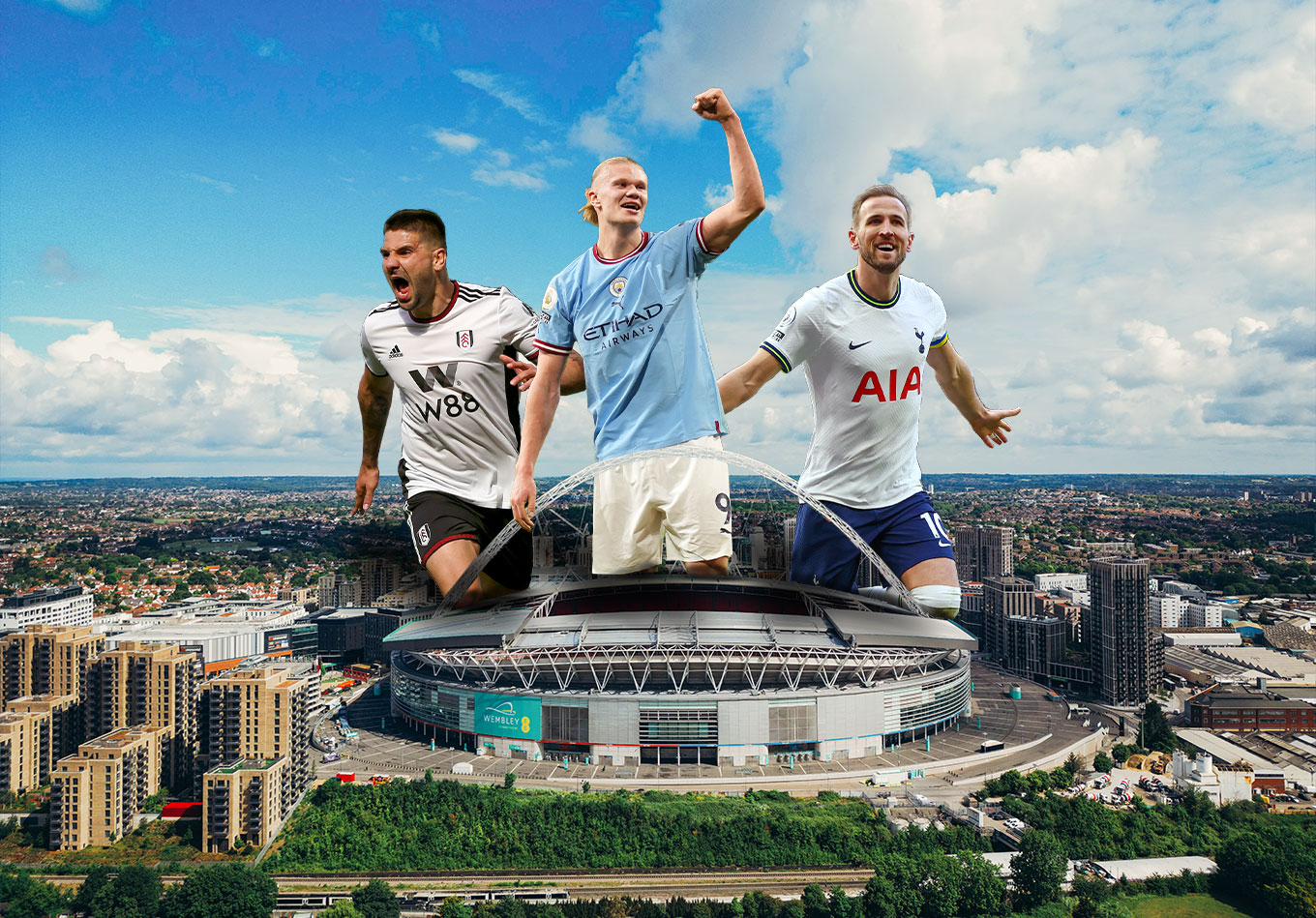When a Premier League manager chooses to do something differently, they might get the odd person taking note. When Pep Guardiola opts for a tactic we haven’t seen for a while or ever before, people will study what he has done because it could end up being the latest stage in the evolution of the game for which the Manchester City manager is responsible.
So, looking back on the night he took Manchester City to the Emirates in February, with his side three points behind Premier League leaders Arsenal having played a game more than their title rivals, and how they beat the Arsenal press by going long, could it be that we were witnessing something seminal?
Arsenal had been the best team in the Premier League up until that point, and they had the best press in the division, too. Led by Martin Ødegaard, Bukayo Saka and Gabriel Jesus, Arsenal forced more high turnovers of possession than any other team in the top flight (388). Going into the game against City, they had also had the most shots following a high regain (36 in 21 games). Guardiola recognised how well Arsenal pressed and decided to approach the game differently.
So, City went direct.
This wasn’t Sam Allardyce’s Bolton, with Jussi Jääskeläinen launching balls up to Kevin Davies, but it also wasn’t entirely recognisable as Guardiola’s City. They attempted just 140 passes in their own half, and completed only 120. They had 36.5% possession. All three were the lowest figures City have recorded in a Premier League game in Guardiola’s entire seven-year reign – or 266 matches.
In no other game in his City career has goalkeeper Ederson played more balls into the opposition’s half than he did that night at the Emirates (20). He often plays long balls with pinpoint accuracy to an attacking teammate in space whether he is under pressure or not, but on that night at Arsenal, the ploy was clear: beat the Arsenal press by going over the top.
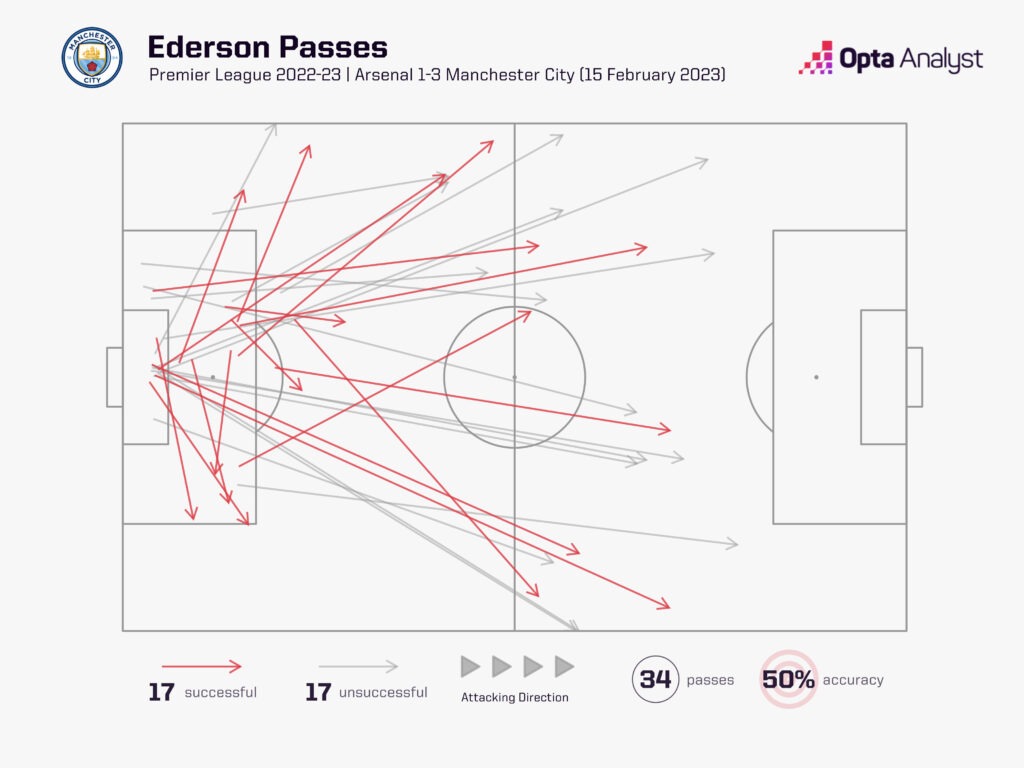
City hadn’t been on their best form in the weeks leading into the game – they had lost across north London at Tottenham 10 days earlier, having also lost the Manchester derby at Old Trafford and been knocked out of the League Cup at Southampton the previous month. So, there was likely some part of Guardiola’s plan that was simply being pragmatic given the opposition and the challenge his team faced. It isn’t as though City played that way for the rest of the season and hoofed their way to the treble.
But the arrival of Erling Haaland has at least allowed Guardiola to consider changing the way his team play. Without a big centre-forward, City couldn’t have done this a year earlier. Even if they don’t go direct every week, they did do so more last season than they had previously under Guardiola. Ederson recorded six of his 11 highest totals for long passes in a Premier League game in the 2022-23 campaign.
For the return game against Arsenal at the Etihad, it wasn’t quite so extreme, but there was still an obvious plan. At home, City are always more likely to dominate, but their 51.9% possession was the sixth lowest they had recorded on home soil in a Premier League game under Guardiola.
As early as the sixth minute, Arsenal showed their intentions as Ødegaard initiated a high press, supported by three teammates. Under pressure deep in his own half, John Stones saw no problem with going long.
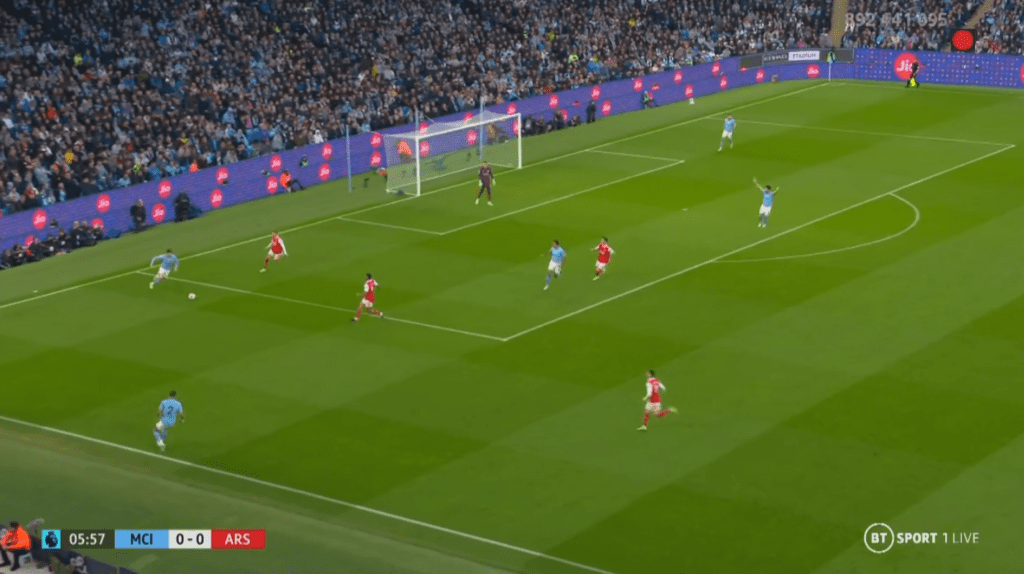
He targeted Haaland, who had pinned Rob Holding – undoubtedly the weak link in Arsenal’s lineup that day – with his back to goal. He held off his opponent, and brought the ball under control with his first touch…
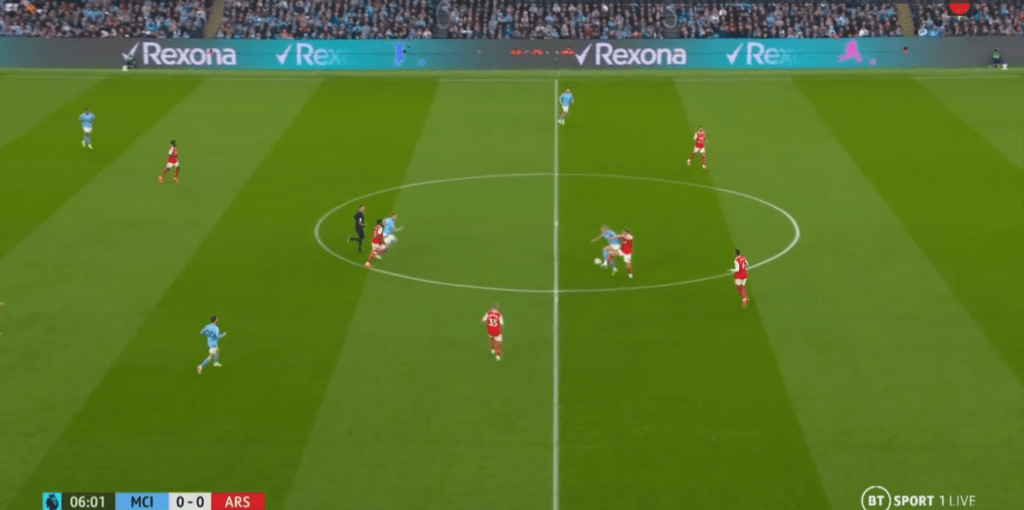
…before laying it off to an onrushing Kevin De Bruyne.
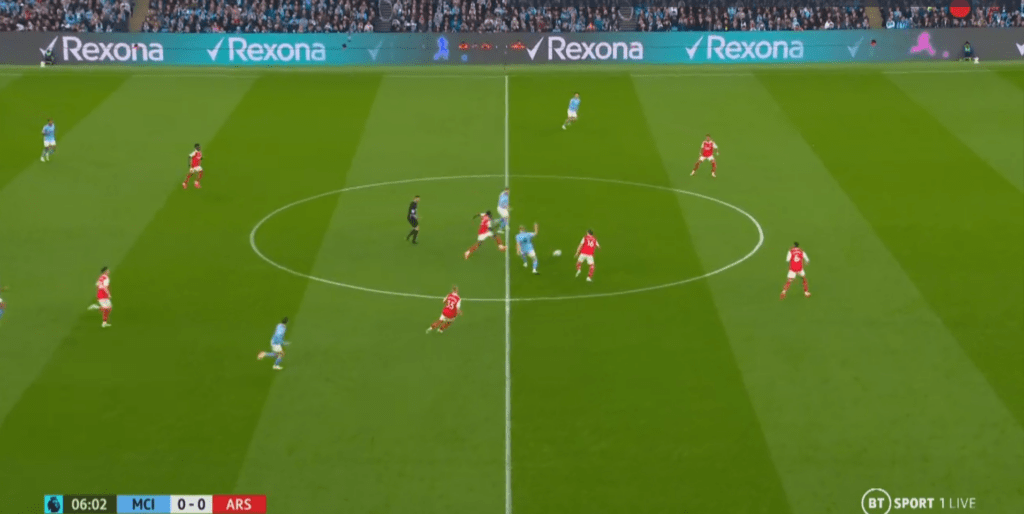
The Belgian then burst through the heart of the Arsenal team. Nine seconds after Stones had decided to boot the ball up the pitch, it was in the back of the Arsenal net.
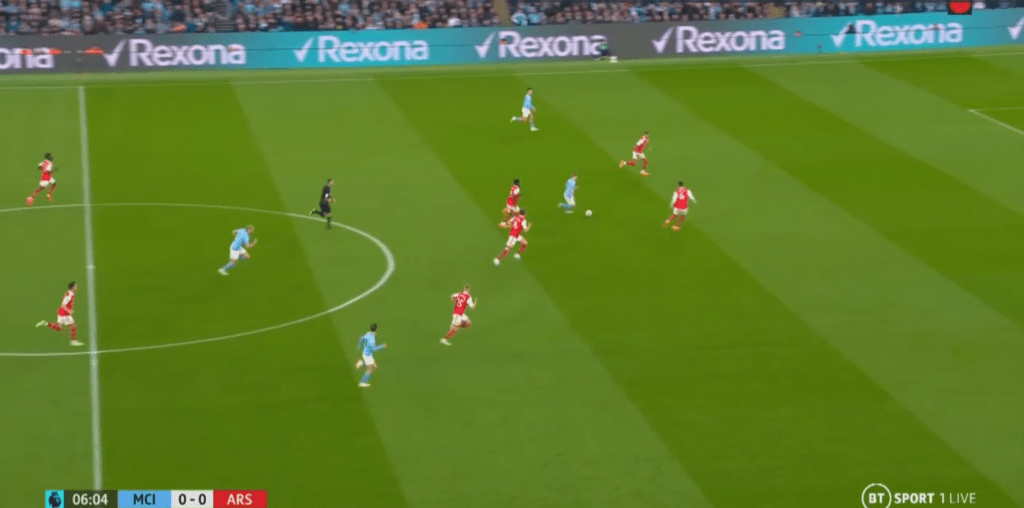
So, is this the latest way in which Guardiola will revolutionise football, or was it just a practical tactic used on a couple of occasions to beat the best-performing side in England? And what could other teams learn from what happened?
Pressing is becoming a more important part of the game with every passing year. And teams from the top of the Premier League right down to the bottom are all getting better at it.
For the seventh season in succession, Premier League teams set a record for the total number of high regains made, with 6,095, or 16 per game. High turnovers have been rising steadily ever since Opta started collecting this data in detail, with 2022-23’s total more than 2,000 higher than in 2012-13, a decade earlier.
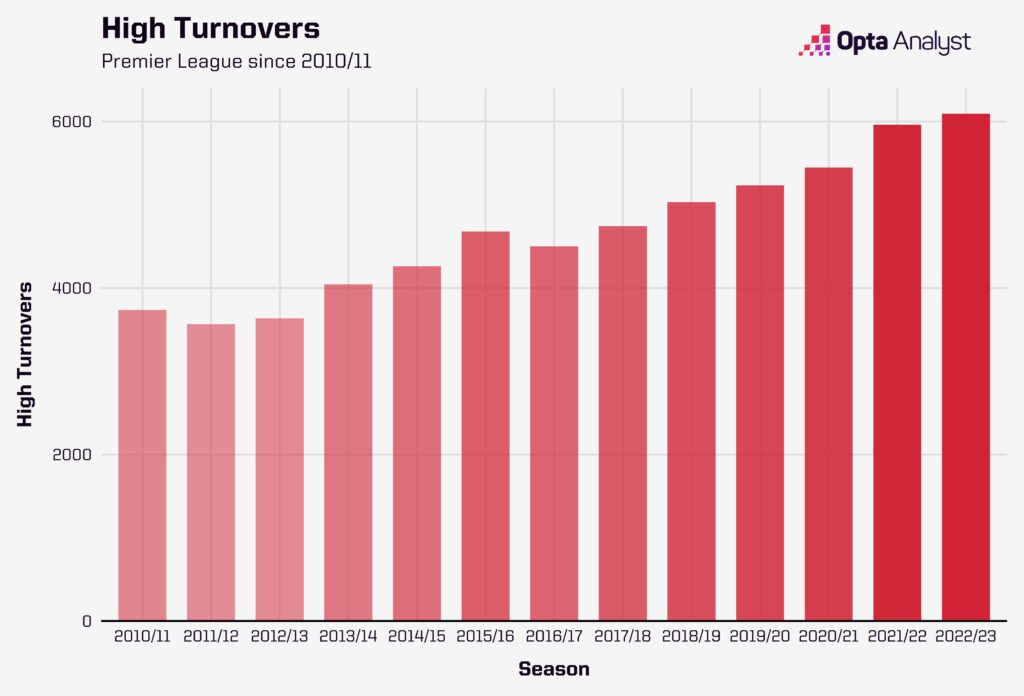
Teams aren’t just winning the ball high up the pitch more; they are doing more with it after winning it back. High regains leading to shots are also higher than ever before, having increased season on season over the past 13 years.
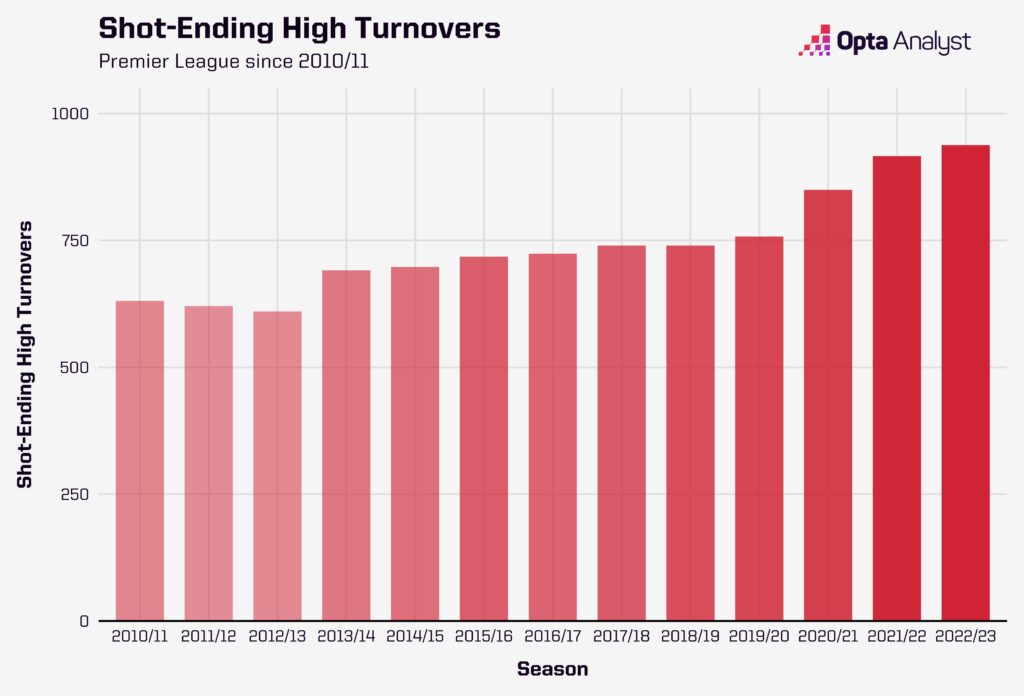
And so are goals following a high regain. The 98 such goals that were scored in 2022-23 was 20 more than the season before, and more than double the total scored in 2010-11. Every team in the league scored at least one goal following a high turnover; City, Arsenal, Brentford and Tottenham led the Premier League with nine each, followed by relegated Leicester City (seven), Brighton and another relegated side in Leeds United (six each).
All sorts of teams press high, and the likes of Brentford and Brighton do so incredibly well and incredibly intelligently. As a result, it’s getting more and more difficult to play out short from the back, which is presumably at least part of the reason that Ederson went long more often in 2022-23.
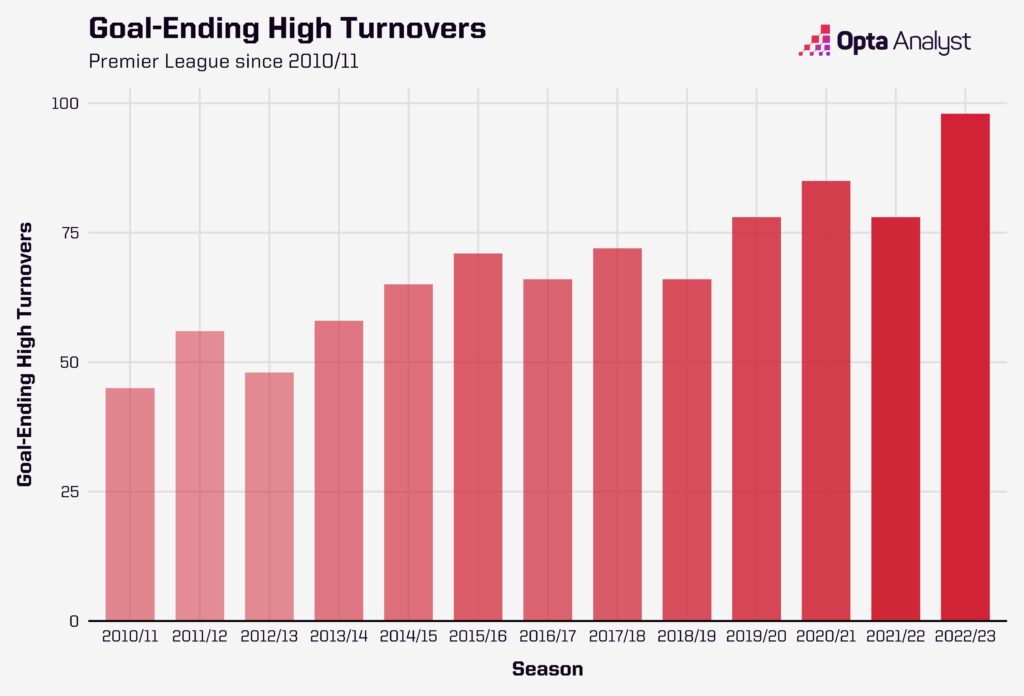
Old-school centre-forwards are very much a thing of the past. Nobody is expecting a Niall Quinn-type forward to turn up at Wolves next season and lead an intense press. But the rise in pressing gives more reason than ever before to have a player who can hold the ball up under pressure, and give the goalkeeper and defenders an option to look for with a long ball if they are struggling to play out.
There are plenty of top managers who insist their players stick to playing short out of defence whatever the risk. Tottenham’s new manager Ange Postecoglou is said to actively praise players who make mistakes and lose the ball if their intention was to stick to his game plan. There is almost no room for manoeuvre on this front. Roberto De Zerbi and Mikel Arteta are two other managers who want their teams to play through the thirds every time their teams build out from the back.
But you can also imagine that these managers will have seen what City did last season and could now consider going long a little more often. There are Arsenal fans out there who want a bigger striker – at least as an option in the squad – than Jesus. Both Danny Welbeck and teenager Evan Ferguson provide a physical presence up front for Brighton. Erik ten Hag wants to sign a centre-forward for Manchester United this summer, his team having looked far better with Wout Weghorst up front last season – the perfect player to provide an out ball if the defenders are being pressed and need to go long.
It also just so happens that 2022-23 was the first season since 2015-16 that the top three goalscorers in the Premier League were all out-and-out number nines, rather than inside forwards. Haaland (36), Harry Kane (30) and Ivan Toney (20) were the top scorers last season, while in recent years the charts have often been dominated by wide forwards like Mohamed Salah, Son Heung-min, Sadio Mané and Raheem Sterling.
In the seasons preceding 2015-16, the goalscoring charts were full of centre-forwards. The top four scorers in 2014-15 were all centre-forwards, and seven of the top eight were the season before that. You only have to go back as far as 2011-12 to find a season when the top 10 scorers were all strikers in the traditional sense.
Football tactics are constantly evolving and are often cyclical in their nature. So, are the improvements in Premier League pressing going to precipitate a rise in teams happy to go a bit more direct and using a big man up top?
It’s unlikely that we’ll see target men like Grant Holt – who was the eighth-highest scorer in 2011-12 – playing in the Premier League again any time soon, simply because strikers have to be able to press these days. Finding a big centre-forward who can hold the ball up, score goals and press – like Haaland, Kane or Toney – is obviously easier said than done, but forwards who can do it all are becoming increasingly common.
City buying Haaland last summer could now, with the benefit of hindsight, be considered an indication of where City were headed. The fact that Guardiola signed off that purchase and, having for so long refused to let his teams do anything other than keep the ball on the floor and play out from the back, is now happy for his team to go long suggests we could be approaching a turning point.
It’s not quite the return of long-ball football in the sense that we once knew it, but it may be the case that next season, with Premier League teams pressing better than ever before, others are happy to play it straight up to the big man up top.
Enjoy this? Subscribe to our newsletter to receive five stories each Friday. It’s free. And follow us on Twitter too.
